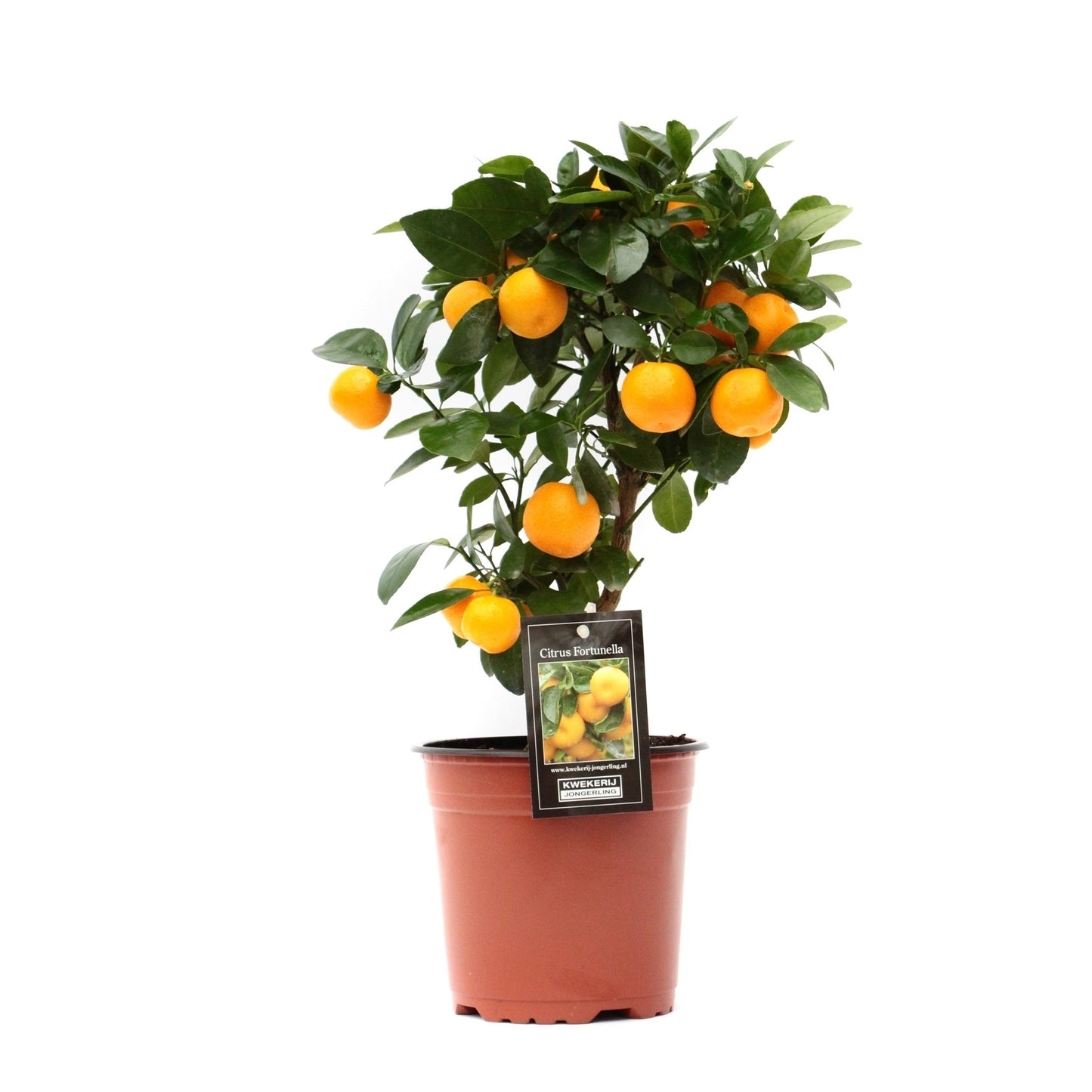افندي مندرين
افندي مندرين
Couldn't load pickup availability
Citrofortunella x microcarpa manderin
Growing Citrofortunella x microcarpa, commonly known as Calamondin or calamansi, is similar to growing other citrus fruits. Here’s a guide on how to grow Citrofortunella x microcarpa ‘Mandarin’:
Materials You’ll Need:
• Calamondin ‘Mandarin’ sapling or seeds
• Suitable location (sunny and well-draining)
• Well-draining soil
• Mulch
• Fertilizer formulated for citrus trees
• Watering can or hose
• Pruning shears (for maintenance)
Steps for Growing Citrofortunella x microcarpa ‘Mandarin’:
1. Select a Location: Choose a sunny location with well-draining soil for your Calamondin ‘Mandarin’ tree. Full sun is essential for optimal fruit production.
2. Planting: If you’re starting from a sapling, plant it in a hole that’s about the same depth as the root ball but twice as wide. Leave enough space between trees, typically at least 6 feet apart.
3. Soil Preparation: Calamondins prefer well-draining, slightly acidic to neutral soil (pH 6.0 to 7.0). Amend the soil with organic matter like compost to improve fertility and drainage.
4. Mulch: Mulch around the base of the tree to retain soil moisture, regulate temperature, and suppress weeds. Maintain a mulch-free zone around the trunk to prevent rot.
5. Watering: Keep the soil consistently moist, especially during dry periods. Water when the top inch of soil feels dry. Calamondins like regular watering but should not be left in waterlogged conditions.
6. Fertilization: Feed your Calamondin ‘Mandarin’ with a balanced fertilizer formulated for citrus trees. Apply fertilizer in spring and summer according to the package instructions.
7. Pruning and Maintenance: Prune your Calamondin ‘Mandarin’ to shape it, remove dead or crowded branches, and improve air circulation. Regular pruning can also help control the size of the tree.
8. Pest and Disease Management: Monitor for common citrus pests such as aphids and scale insects. Treat with insecticidal soap or neem oil if needed. Watch for signs of citrus diseases and address them promptly.
9. Harvesting: Harvest Calamondin ‘Mandarin’ when the fruits are fully colored and ripe. These small citrus fruits are commonly used for culinary purposes, as juice, or as ornamental additions to dishes.
10. Protection: Protect your tree from cold temperatures, especially if you’re growing it in a region with occasional frost. Consider covering the tree or moving it indoors during cold spells.
Adapt care practices based on your specific local conditions, and consult with local experts for advice tailored to your region. Growing Calamondin ‘Mandarin’ can be a rewarding experience, providing both ornamental beauty and culinary versatility.
Share

